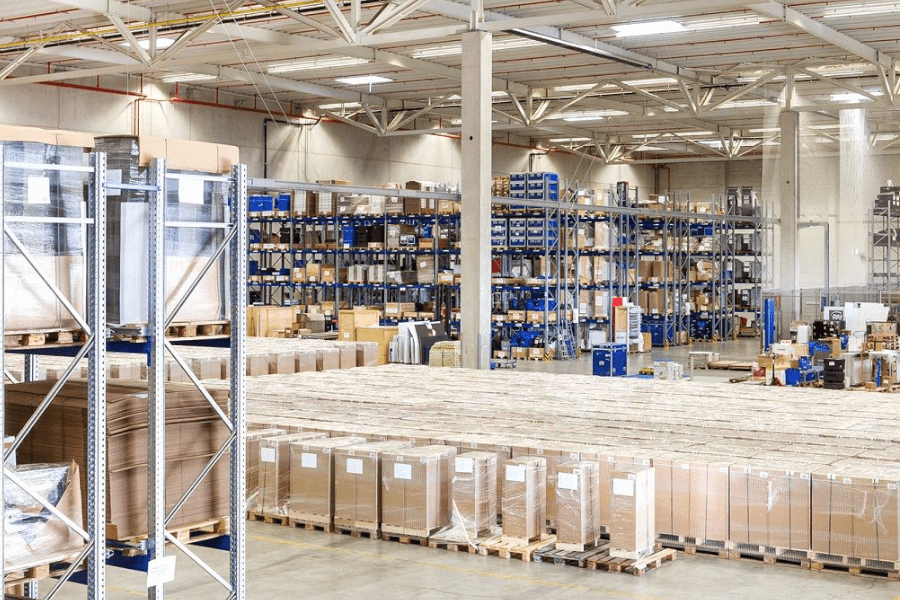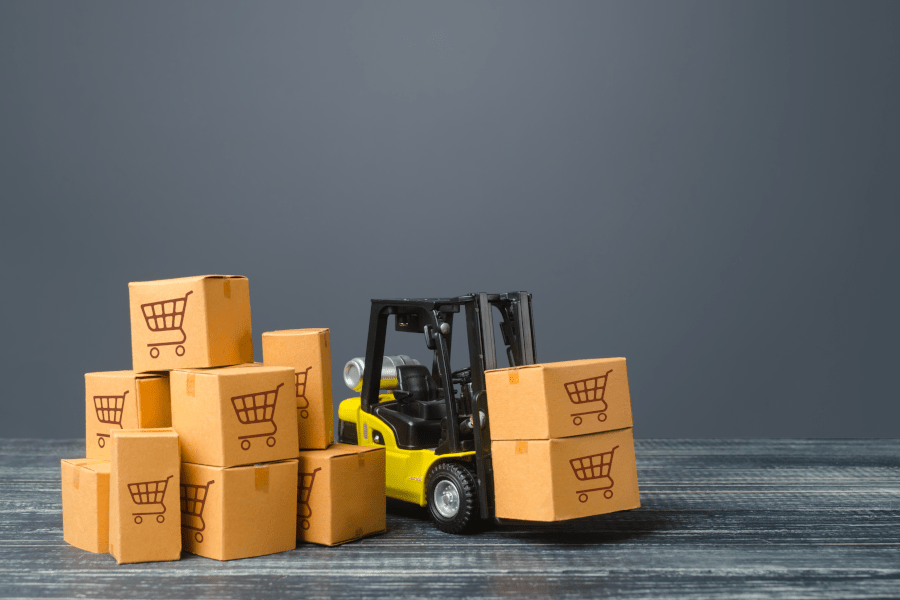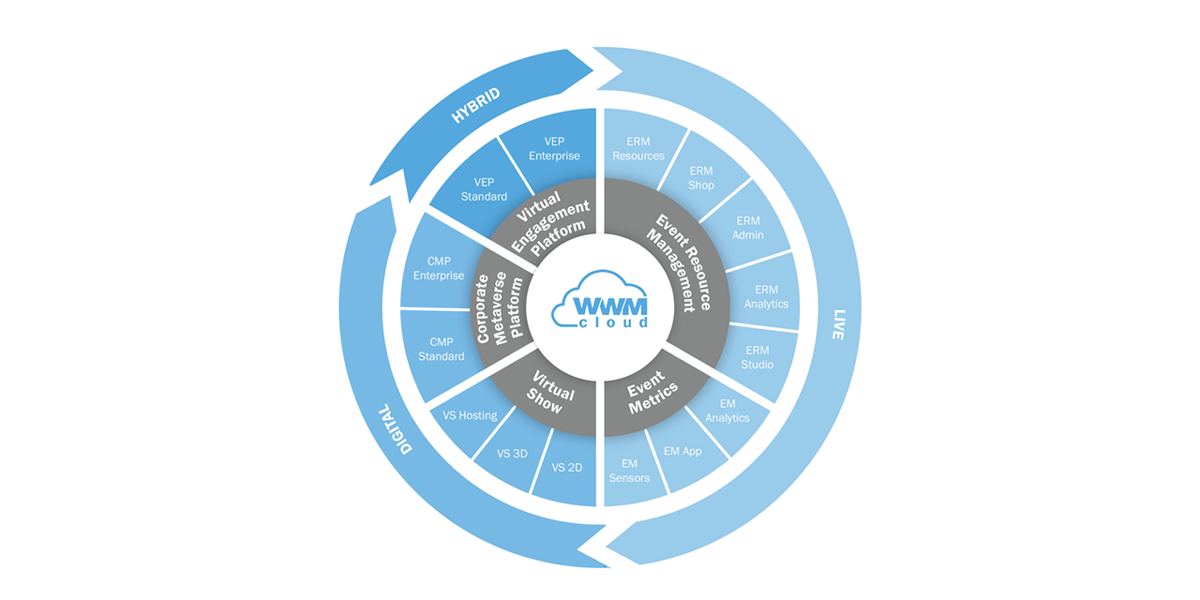5 Tips for Stress-Free Event Logistics
With the multitude of annual events, trade shows, and exhibitions, not only is a successful outcome for the client crucial, but also a professional...
6 min read
 Dr. Christian Coppeneur-Guelz
:
Oct 25, 2024 3:00:00 PM
Dr. Christian Coppeneur-Guelz
:
Oct 25, 2024 3:00:00 PM

The COVID-19 pandemic has presented the entire trade fair and events industry with massive challenges. While the exhibition and event departments of exhibiting companies are still busy managing the fallout from cancelled fairs and events, another issue is increasingly coming to the forefront: What do we do with our exhibition stand and exhibition materials?
The central questions are:
This article discusses potential solutions and describes what future-proof and innovative storage of exhibition stands and materials looks like.
Since the beginning of the year, the COVID-19 pandemic has shaken the event and exhibition departments of exhibiting companies. In particular, the last-minute cancellations in the first half of the year have placed an enormous burden on those responsible. Entire supply chains had to be cancelled and reversed in a very short time. Unfortunately, the hope for a bit of relief during the typically quiet summer months did not materialise either, as new challenges emerged on the horizon. With the cancellation of autumn fairs and increasing economic risks in the industry, event managers now have to deal with a new and critical issue:
Is my exhibition material still safe where it is currently stored, and how do I manage storage efficiently? (without knowing when operations will restart and which materials I will still need)
The core challenge is not only to find a quick and cost-effective solution for the storage of exhibition stands and materials but also to elevate the management of exhibition materials (exhibition stands, equipment, exhibits, promotional materials, giveaways, etc.) to a long-term, future-proof, and above all, flexible solution. Such solutions are now referred to as event resource management, which encompasses the management of all resources needed for events and exhibitions.
Event Resource Management – Quo Vadis?
In my research for the book "Event-Resource-Management mit digitalen Tools,"(Event Resource Management with Digital Tools) I have extensively explored the operational practices and the necessary realignment of the management of exhibition materials.

Learn More About the Book "Event-Resource-Management mit digitalen Tools"
Based on a framework, six key success factors for future-proof management of exhibition resources have been identified:
Information
Costs
Agility
Speed
Scalability
Quality
These six success factors provide a structural framework for selecting providers and establishing a future-oriented approach to the storage of exhibition materials.
In the introduction, we raised the question of what exhibition materials will still be needed in the future. While this question is fundamentally correct and important, many companies struggle with the more basic question:
“What exhibition materials do we actually have?”
This issue is well addressed by the success factor of "Information" in event management. If we do not know what we have, we cannot meaningfully answer the question, "What do we still need?" Therefore, efficient and effective storage must adhere to the principle of complete and up-to-date information. This requirement is typically met by so-called ERM software solutions today. These solutions serve as an interface between the inventory of the exhibition builder and the client’s event department.
 Figure 1: Management of Exhibition Furniture in the ERM System
Figure 1: Management of Exhibition Furniture in the ERM System
Especially with regard to the decision of which materials will be needed in the future, these tools provide the quantitative basis for decision-making. This allows decisions about the ongoing storage of materials or disposal to be made based on data rather than "gut feeling."
Furthermore, in the current situation, adopting event management solutions offers significant advantages. Implementing such a system makes existing materials visible at a glance and helps determine what needs to be disposed of. In many projects, we have found that after implementing the system, numerous materials were disposed of. The reason is quite simple: many companies had forgotten that they even had these items. In some cases, products with outdated logos or expired promotional materials had been unnecessarily stored for years.
The primary driver of storage costs for exhibition materials and equipment is simply the quantity of material stored. This is typically measured in pallet spaces or cubic meters (m³).
As described in Success Factor 1, "Information," having precise knowledge of the available materials and their quantities is crucial for management. Therefore, it makes sense to first record and analyze the inventory using an ERM system. Simply having a complete inventory and an online representation reveals immediate cost-saving potentials. The goal should be to reduce the number of pallet spaces or the storage volume.
We will explore another aspect of costs in the section on "Agility." Especially in volatile times, the agile adjustment of inventory levels and related billing intervals has a sustainable impact on overall costs. The principle is: better short-term flexibility than long-term cost reduction.
We live in a world that is often described by the term VUCA, which stands for Volatile, Uncertain, Complex, and Ambiguous. The current COVID-19 pandemic is another example of this uncertainty.
In this context, the inventory management of exhibition equipment must be able to respond quickly to changes. One example is the predictability of inventory levels even in a volatile environment.
Good inventory management, therefore, can foresee stock levels based on an ERM solution, providing the foundation for agile decision-making. We might be exhibiting next week. Do we have the necessary equipment available? Do we still have enough brochures?
 Figure 2: Real-Time Availability of Exhibition Materials
Figure 2: Real-Time Availability of Exhibition Materials
The agility of event management is thus largely determined by the speed of information and the digital tools available.
In addition to agility, modern storage of exhibition equipment must also be fast. What is the point of agile action if the execution takes a long time? Therefore, one should choose a provider that has the necessary expertise in the logistics of event equipment. It is essential for the provider to be directly connected to carriers (shipping service providers) so that the movement of exhibition materials can be executed directly.
 Figure 3: Integration of Shipping Service Providers
Figure 3: Integration of Shipping Service Providers
The diagram illustrates the integration of the ERM software "ExpoCloud" with various shipping service providers. This solution allows event managers to not only ship exhibition equipment on the same day but also to directly compare the costs of different shipping methods. This ensures not only the speed of processes but also effective cost control.
In a dynamic environment, inventory levels must be able to adapt flexibly to new conditions. This process of inventory management is referred to as scalability. Scalability is characterised by both a short-term increase and a reduction in the equipment stored.
Often, exhibition builders or service providers only offer storage on an annual basis. In this model, mid-year changes to inventory levels (e.g., reductions) do not lead to an immediate decrease in costs. Therefore, a scalable inventory management system should also allow for mid-year billing intervals. A professional provider should offer the following options:
Pallet space per year
Pallet space per month
Pallet space per day
Of course, the annual costs are generally cheaper per time unit in most cases. However, especially in volatile times, it is more important to prioritise flexibility and scalability over long-term cost reductions.
In the past, the storage of exhibition stands and materials was often viewed as a secondary service provided by exhibition builders. As a result, little attention was typically paid to the processes and quality of storage.
Somehow, everything always seemed to be at the right place at the right time for the exhibition...
However, those times are long gone. The increasing interconnectedness of services demands efficient and traceable processes. Event planners are no longer simultaneously producers and logistics managers. When these processes are handled cooperatively yet separately, errors in processes and quality become immediately apparent.
Storing exhibition stands and materials is a discipline in its own right.
This also means that you can make decisions about storage independently of your current or future exhibition builder. However, this shifts the decision-making parameters, as processes and quality now come to the forefront. Therefore, there is one clear recommendation: Visit the storage facilities of your exhibition logistics provider in person. A picture is worth a thousand words. Have them show you the processes (software) as well as the execution (reality) on-site. This way, you quickly gain a clear understanding.
 Figure 4: State-of-the-Art Logistics Centre of WWM GmbH & Co. KG
Figure 4: State-of-the-Art Logistics Centre of WWM GmbH & Co. KG
The article has outlined the necessity for a realignment of the management of exhibition materials based on six success factors. The COVID-19 pandemic has not merely been a trigger but rather an accelerant for a long-overdue revision of the management of exhibition equipment.
The key messages are:
Information: Gain transparency over your current inventory. The key to this is not Excel spreadsheets but a modern ERM system. Therefore, only store your inventory with providers who can give you access to such a system.
Costs: Based on the information, you should systematically “declutter.” A direct overview of the inventory creates the foundation for this. Furthermore, a professional provider should be able to easily scale inventory levels. This means they should offer storage intervals of “per year,” “per month,” and “per day.” In volatile times, shorter intervals (scalability) should be preferred over longer ones, even if the latter initially appear cheaper per time unit.
Agility: The agility of inventory management largely depends on the speed of the information system. Only when information is quickly available can agile action be taken.
Speed: Simply being agile is not enough; the provider must also be able to execute logistical movements quickly and efficiently. Inquire about the online connections with various shipping service providers. Only then can logistical movements be carried out swiftly.
Scalability: In addition, the storage intervals should also be “agile” to enable the short-term reduction of storage costs for exhibition materials.
Quality: The storage of exhibition stands and materials has become a discipline in its own right. A picture is worth a thousand words. Make sure to assess the storage facilities of providers in person. Pay attention to the premises, organisation, and processes.

With the multitude of annual events, trade shows, and exhibitions, not only is a successful outcome for the client crucial, but also a professional...

The compilation of promotional materials for various events is more difficult and stressful in most companies than packing for a holiday. Simple and...

Exhibition stand at the “Exhibition as a Service” rate We have all heard the term SaaS (Software as a Service) before and we have certainly used...